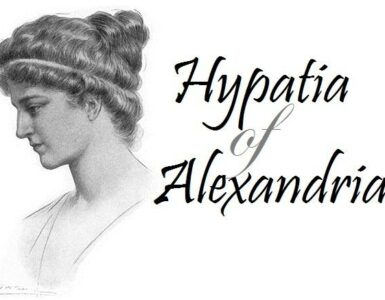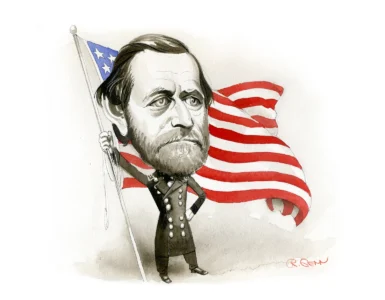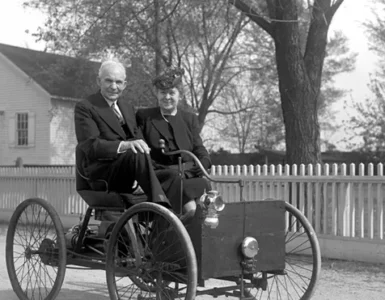Richard Wagner stands as one of the most influential and controversial composers in the history of Western music. Born in Leipzig, Germany, in 1813, Wagner fundamentally changed the landscape of opera through his visionary works, which blended music, poetry, and theater into unified artistic expressions. His innovations extended far beyond the music itself, influencing stage design, orchestration, harmony, and the dramatic structure of operas. Wagner’s ambitious operatic cycles, particularly Der Ring des Nibelungen, challenged traditional forms and introduced a new level of emotional intensity and thematic depth. Though his life and political views sparked significant controversy, his artistic contributions are undeniable and have left a permanent imprint on music history.
Wagner’s life and work symbolize the Romantic era’s desire to break from classical norms and explore deeper human and philosophical issues through art. He not only composed music but also wrote the librettos for his operas, developed his own theories of art, and even oversaw the construction of the Bayreuth Festspielhaus—a theater designed specifically for his monumental works. Despite personal financial struggles, political exile, and public criticism, Wagner pursued his artistic vision with unrelenting determination. Today, his operas remain staples of the classical repertoire, and his influence can be traced across music, literature, film, and philosophy.
Early Life and Musical Formation
Richard Wagner was born on May 22, 1813, in Leipzig, a culturally vibrant city that played a crucial role in shaping his artistic sensibilities. His father died shortly after his birth, and his stepfather, Ludwig Geyer, an actor and playwright, became a key influence in Wagner’s early life. From a young age, Wagner displayed an interest in theater and literature, which later became integral to his operatic compositions. Although he began studying music relatively late compared to other great composers, Wagner quickly developed an intense passion for composition. He studied at the University of Leipzig and later at the Thomasschule, where he immersed himself in the works of Beethoven, Mozart, and Weber.
Wagner’s early musical career was marked by experimentation and ambition. His first operas, such as Die Feen and Das Liebesverbot, were composed in the 1830s and reflected the influence of German Romanticism. These early efforts, while not commercially successful, revealed his talent for orchestration and drama. In 1842, Wagner achieved his first significant breakthrough with the opera Rienzi, which was well received in Dresden and led to his appointment as the Royal Saxon Court Conductor. This period marked the beginning of his professional recognition, setting the stage for the revolutionary works that would define his legacy.

Wagner’s Artistic Vision and Operatic Revolution
Wagner sought to transform opera from mere entertainment into a total work of art, or Gesamtkunstwerk, a term he coined to describe the synthesis of music, poetry, drama, and visual spectacle. He believed that opera should not simply be a showcase for vocal prowess but should serve a deeper artistic and philosophical purpose. This vision led him to write his own librettos and draw inspiration from Germanic myths, folklore, and Norse legends. His works often explored themes of love, betrayal, redemption, and the human struggle for meaning—ideas that resonated deeply with the Romantic spirit of the 19th century.
One of Wagner’s most radical innovations was his use of leitmotifs—recurring musical themes associated with specific characters, emotions, or ideas. This technique allowed for greater psychological depth and thematic cohesion throughout his operas. Unlike traditional operas with clearly separated arias and recitatives, Wagner favored a continuous musical flow that closely followed the drama’s emotional trajectory. This approach reached its full expression in his later works, particularly the monumental Der Ring des Nibelungen (The Ring of the Nibelung), a four-opera cycle composed over more than 25 years. Wagner’s artistic philosophy not only redefined opera but also laid the foundation for modern film scoring and narrative music.
Political Exile and Personal Struggles
Wagner’s life was as dramatic as his music, marked by political activism, financial instability, and controversial views. In 1848, inspired by the revolutionary spirit sweeping across Europe, Wagner became involved in the Dresden Uprising, advocating for political reform and German unification. His radical involvement forced him to flee Germany and spend several years in exile in Switzerland. During this period, Wagner experienced severe financial difficulties and relied on the support of friends and admirers to continue his work. Despite these hardships, his time in exile was intellectually productive, as he wrote extensive theoretical essays and completed major operas such as Lohengrin and Tristan und Isolde.
Wagner’s personal relationships were often tumultuous. His marriage to Minna Planer was strained by his infidelity and obsessive devotion to his work. Later, he began a controversial affair with Cosima von Bülow, the daughter of composer Franz Liszt and wife of his friend and conductor Hans von Bülow. Cosima eventually left her husband and married Wagner, becoming his lifelong partner and an essential supporter of his career. Despite his controversial private life and outspoken opinions, Wagner maintained a loyal circle of admirers, including King Ludwig II of Bavaria, who provided him with the financial support necessary to complete many of his greatest works.
The Bayreuth Festival and the Ring Cycle
One of Wagner’s most enduring legacies is the Bayreuth Festival, an annual event dedicated to performing his operas. Dissatisfied with the conventional opera houses of his time, Wagner designed the Bayreuth Festspielhaus in Bavaria, a revolutionary theater built specifically to stage his works. The theater featured innovations such as a hidden orchestra pit and a darkened auditorium, enhancing the audience’s immersion in the performance. The first Bayreuth Festival opened in 1876 with the complete premiere of the Ring Cycle, a 15-hour epic spread across four operas: Das Rheingold, Die Walküre, Siegfried, and Götterdämmerung.
The Ring Cycle remains one of the most ambitious achievements in Western music. Drawing from Norse mythology and German epic poetry, the cycle tells the story of gods, heroes, and the corrupting influence of power. Its musical complexity, thematic depth, and philosophical scope make it a cornerstone of operatic literature. Through the Ring, Wagner explored the destructive nature of greed, the search for redemption, and the cyclical nature of history. The cycle’s enduring popularity at Bayreuth and around the world is a testament to Wagner’s lasting impact on the art form and his ability to address timeless human concerns through music and myth.

Legacy, Controversy, and Cultural Impact
Wagner’s influence on music and culture is profound and far-reaching. His innovations in harmony, orchestration, and dramatic structure paved the way for composers like Mahler, Strauss, Debussy, and even 20th-century film composers such as John Williams. Beyond music, Wagner’s works inspired writers and philosophers including Friedrich Nietzsche, who initially admired Wagner’s ideas before later critiquing him. His concepts of the Gesamtkunstwerk and leitmotif became foundational in understanding narrative and emotional continuity in modern storytelling across various mediums.
However, Wagner’s legacy is also tainted by his deeply problematic views, particularly his antisemitic writings and associations. These writings, such as Das Judenthum in der Musik, expressed hostile attitudes toward Jewish composers and culture. Though Wagner died in 1883, his works and ideologies were later appropriated by Adolf Hitler and the Nazi regime, which admired Wagner’s vision of a mythic, unified Germany. This association has sparked ongoing debate over the ethical implications of performing and celebrating Wagner’s music, especially in countries like Israel, where his works are rarely performed due to his documented bigotry.
Conclusion: Wagner’s Dual Legacy of Genius and Controversy
Richard Wagner remains one of the most complex and influential figures in the history of music. His revolutionary approach to opera redefined the genre, pushing the boundaries of what was possible in musical storytelling. With masterpieces such as Tristan und Isolde, The Flying Dutchman, Parsifal, and the Ring Cycle, Wagner created works that are as emotionally powerful as they are intellectually profound. His innovations continue to influence music, theater, film, and literature, making him a towering figure in Western culture.
Yet Wagner’s legacy is a dual one. While his musical genius is widely recognized, his personal beliefs and the appropriation of his works for hateful ideologies have cast a shadow over his reputation. Understanding Wagner requires acknowledging both his artistic brilliance and his moral failings. In doing so, we gain a fuller picture of a man who not only changed the face of opera but also became a symbol of both the heights and depths of human expression. As debates around his legacy continue, one thing remains certain—Richard Wagner’s impact on the world of art is as monumental as it is enduring.





Add comment